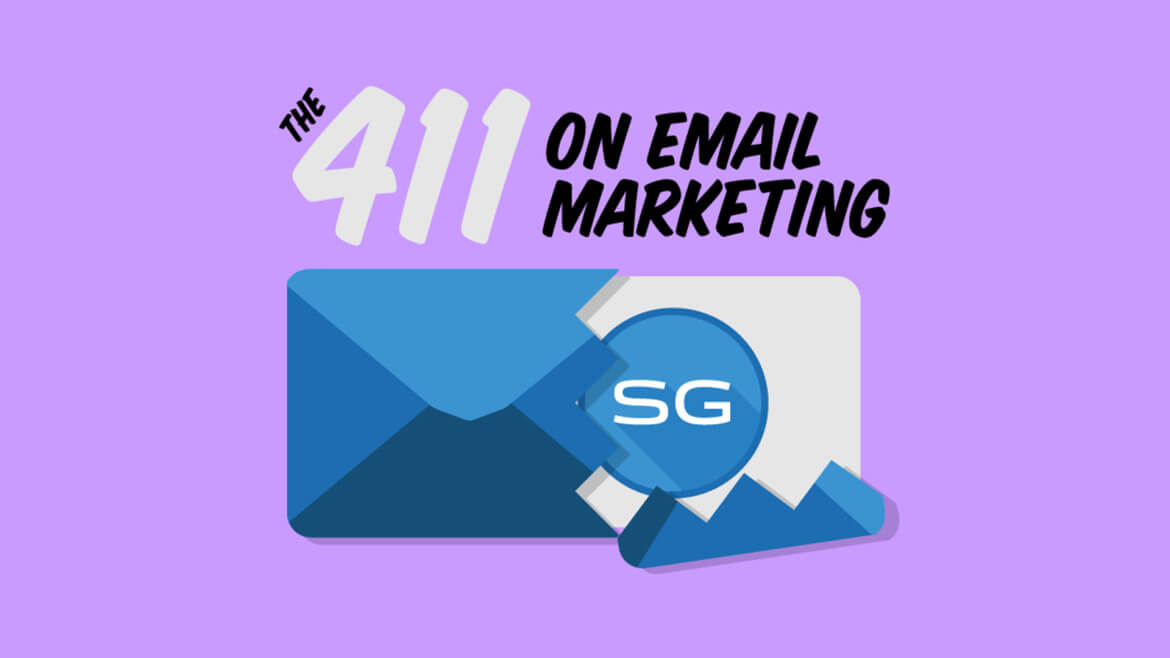The 411 on Email Marketing Spam Complaints and How to Avoid Them
Email marketing is one of the most effective forms of content marketing. It’s fun to think about the strategic plan and possible creative executions when starting an email marketing campaign: What promotion should I include? What kind of layout will be most attractive? When can I get a photographer in for product photos? These are definitely important questions that take time and thought to answer.
Perhaps not as exciting, but equally important, are the questions that impact your campaign’s deliverability. What happens when someone marks my email as spam? How can I avoid having my email wind up in spam? How do I acquire email addresses to send my email to? The answers to these questions sometimes vary depending on your industry and the email marketing software you use, but we’ll give you some general guidance that can help keep your emails out of people’s spam folders.
Let’s talk about Spam
In the words of Comm100, spam email is any email that was not requested by a user but was sent to that user and many others, typically (but not always) with malicious intent and with no option to cease receiving future emails. As a marketing professional, your email marketing campaigns should be the opposite of spam, but even so, some people decide to mark your email as spam for any reason.
One of our clients who uses Constant Contact sent us a few questions regarding what actually happens when an email is marked as spam. We found these questions pretty thought provoking, not to mention difficult to find answers to. We’ll share them with you here:
#1: When someone marks an email sent through Constant Contact as spam, what exactly is blocked? Is it the full email handle, just the domain, or the mailbox?
It depends on which email service provider they are using. Gmail? Outlook? They each answer this question differently, and they don’t always disclose exactly how because they don’t want people taking advantage of their process of finding a way to get around it. One consistency among them is that all ESPs communicate data back to the sender’s ISP when a message sent from their address has been marked as SPAM. Get too many and your account is put on hold. Constant Contact Support states, “When a contact reports your email as spam (such as by clicking a “This is spam” button in their email program), Constant Contact automatically moves the email addresses from your account onto your Do Not Mail list so you cannot send to them again.” Constant Contact accepts one spam report for every 1,000 emails sent out.
#2 When our email is marked as spam, does that affect our other company emails?
If you get enough emails marked as SPAM, it could hurt your sending deliverability through Constant Contact, but it shouldn’t affect emails you send using Outlook, for example. When sending from Constant Contact, yes, it would seem that the other company email addresses connected to your account would be affected because Constant Contact moves the subscriber’s email addresses from your account, not just the specific email address you sent it from.
#3 Will a person that unsubscribes from our email in Constant Contact also stop receiving personal emails sent from the Outlook account?
As explained in #2, personal emails sent through Outlook would still get delivered because they wouldn’t be sent through the Constant Contact account.
There are lots of email marketing software programs out there (think MailChimp, Constant Contact, Zoho), and each email service provider (ESP) has its own spam policy, in addition to the U.S.’s CAN-SPAM Act. However, most of them have a strict no-tolerance policy for accounts that receive too many spam complaints. It’s not too difficult for your account to get shut down or suspended. Which leads us to…
Avoiding Spam Complaints
There are many techniques that can help you avoid getting spam complaints and receiving a message saying: “Your account has been suspended for spam.” Here are a few big ones:
- Try not to purchase or rent an email list. The people on these email lists will not be expecting to hear from you, and probably haven’t even heard of you. So, they’ll be very likely to hit SPAM. But, if you do choose to purchase an email list, be sure to include an opt-out and an opt-in message so that they don’t feel bombarded. Don’t worry though; there are many good ways to acquire email addresses to send to.
- Make sure your email looks professional. A branded, clean email design will resonate well with recipients and make you look credible. On the other hand, a messy, unfamiliar-looking email could evoke skepticism and cause a Spam complaint.
- Reminders. It’s always a good idea to remind new subscribers of who you are and why you’re sending messages to them. For instance, “You signed up for Company XYZ’s newsletters when you made a purchase at our store.”
- Place a visible unsubscribe button somewhere in your email. (Most are in the footer.) This way, recipients will know that they aren’t forced into receiving your emails. It’s also a must that you follow-up on unsubscribe requests. It’s extremely aggravating to keep receiving emails from an address you unsubscribed from, so if you don’t, you’re likely to get spam complaints.
- Regularly update and manage your lists. There’s no point in sending to uninterested people or deactivated accounts.
Feel free to comment with other questions you have about spam or email marketing in general. We’ll get back to you!






